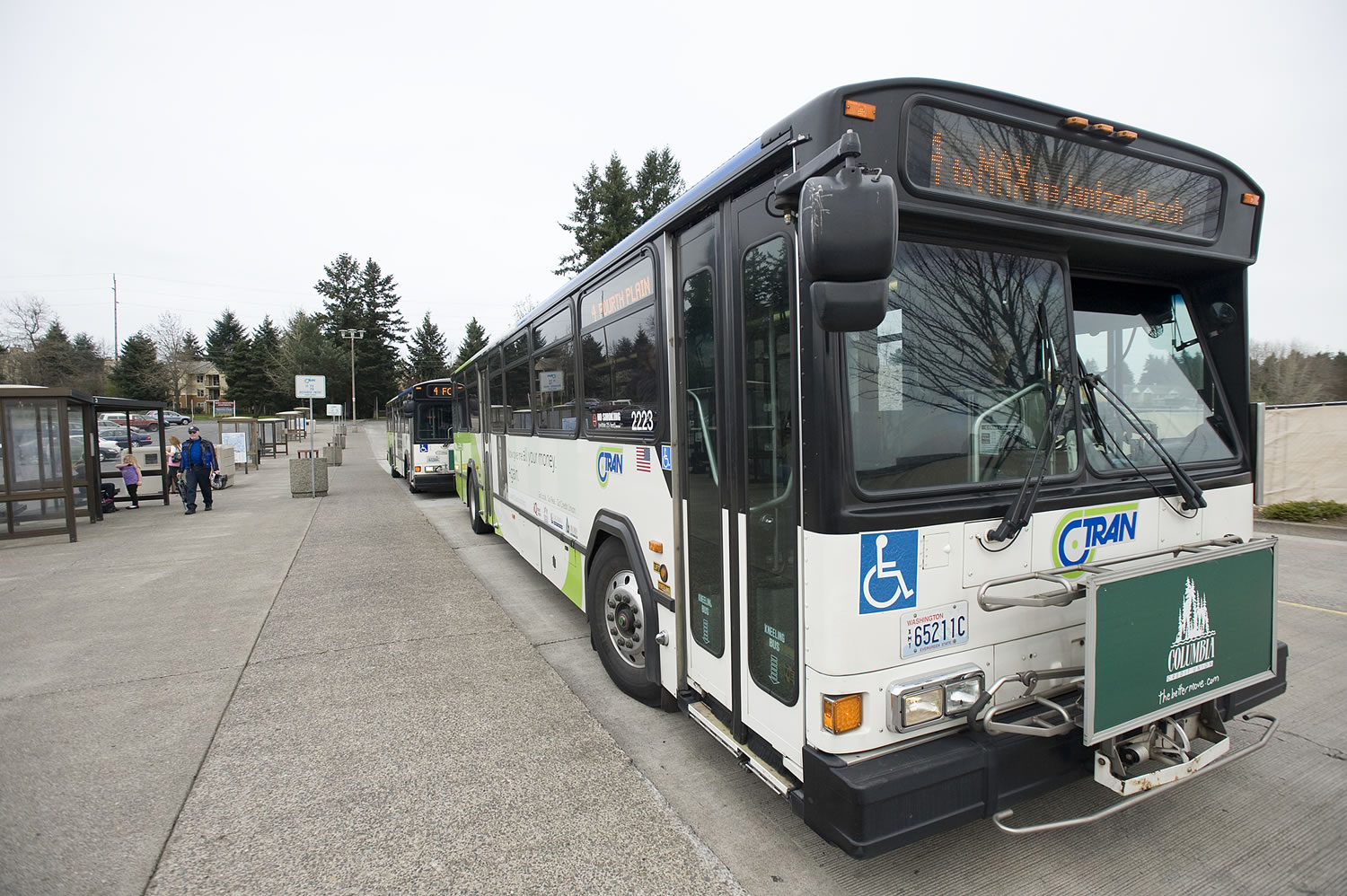A Seattle-based policy institute took aim at C-Tran’s rising expenditures in a report that criticizes the agency for boosting employee pay and costs at a rate far faster than inflation.
The Washington Policy Center, which describes itself as a “nonpartisan think tank promoting … free-market solutions,” released a report this month to better inform local taxpayers and voters, said Paul Guppy, the organization’s vice president for research.
C-Tran leaders say the report’s numbers don’t tell the whole story. In a point-by-point rebuttal sent to local leaders late last week, C-Tran said its expenditures, largely driven by outside factors, are not out of line with transit and state norms.
“(The report) drew some very direct, definitive and in my opinion subjective conclusions,” said C-Tran public affairs director Scott Patterson.
The analysis comes as C-Tran prepares to ask most Clark County voters for a second sales tax increase in two years. Last year’s Proposition 1 gave the agency revenue it said it needed to maintain existing bus service. This year’s measure would, in part, help pay to run light rail in Vancouver, planned as part of the Columbia River Crossing project.
The Washington Policy Center’s report, by Center for Transportation director Michael Ennis, focused on C-Tran’s finances from 1996 to 2010. The agency’s annual operating costs more than doubled in that time, from $17 million to $36 million per year, according to the report — growth mostly tied to wages, salaries and benefits. Inflation over the same period was 39 percent, Ennis wrote, and C-Tran saw relatively slight gains in ridership during that time.
C-Tran didn’t dispute those points. But its rebuttal pointed to several forces pushing costs higher — among them growth in federally mandated paratransit service, which requires staff; increasing medical insurance premiums; increasing utility costs; and a huge jump in fuel costs.
The report also said the share of C-Tran’s operating budget devoted to wages (78 percent) is higher than at any other transit agency in Washington. But that’s not true when factoring in the contracted service that some other transit agencies purchase, according to C-Tran.
C-Tran has experienced financial turmoil since losing much of its state funding after 2000. Since 2010, the agency has cut 35 staff positions and frozen wages for some workers.
Guppy said he’s heard similar responses from other transit agencies facing the same questions. But arguments of mandates, outside factors and peers’ practices often ring hollow to citizens who expect an efficient service, he said. That’s particularly true of an agency that’s raised local taxes to support and expand that service, he added.
“There’s a promise that’s been made to the public,” Guppy said. “The money is not being used efficiently.”
The Washington Policy Center’s report isn’t the first time C-Tran’s finances have come under the microscope. A local forensic accountant released a highly critical analysis last year before the Proposition 1 vote. Voters ultimately approved the measure, which raised the local sales tax rate by 0.2 percentage point.
Patterson attributed the increased scrutiny at least in part to light rail, and the political lightning rod that it’s become as CRC planning continues.
“That generates much more emotion than regular bus service, for example,” Patterson said.
Eric Florip: 360-735-4541; http://twitter.com/col_enviro; eric.florip@columbian.com.




